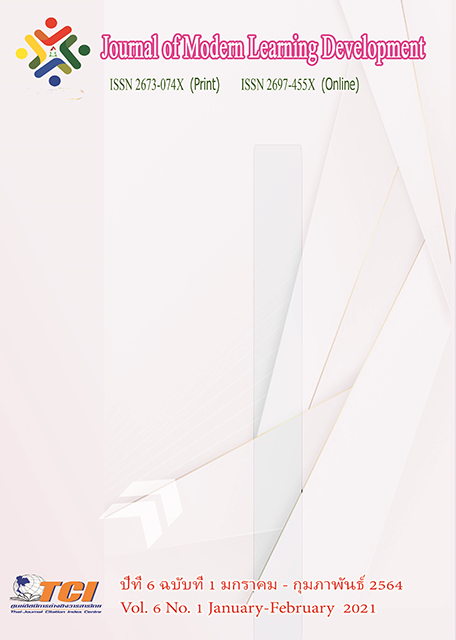Influencing Factor Between Electronic Payments and Money Supplyin Thailand
Main Article Content
Abstract
A study of Influencing Factor Between Electronic Payments And Money Supply In Thailand Its main objectives are 1) to study a Influencing Factor between e-Payment and money supply in the economy 2) Study on differences in the impact of e-Payment and It sub objective is 1) Study the rate of substitution between bank notes and coins in the hands of people Which are being replaced by electronic payment (e-Payment) that affects the economic changes of Thailand. In this research, the researchers used monthly time series secondary data from January 2010 to December 2018 in Thailand. The statistical analysis of multiple linear regression and F-test were used in the test. The study found that Electronic payment (e-Payment) is related to the amount of money in the economy. Statistical significance at the 0.05 level, all payments are significantly different at the 0.05 level. In addition, electronic payments (e-Money) have the most impact on money supply in the economy compared to other forms of payment, alternative rates, and the potential of e-payment. Reduction ratio of reserve assets to deposits and reserves ratio to e-Money will drive up the money in the economy system.
Article Details
References
จักรกฤช เจียวิริยบุญญา. (ม.ป.ป.). ศึกษาระบบการชำระเงิน E-Payments และภาวะหนี้สินครัวเรือนในบริบทภาคอีสาน. ม.ป.ท.: ม.ป.พ.
ธนาคารแห่งประเทศไทย. (2561). เงินอิเล็กทรอนิกส์. ออนไลน์. สืบค้นเมื่อ 18 กุมภาพันธ์ 2562. แหล่งที่มา: http://www.bot.or.th/PSServices/emoney.pdf
ธรรมรักษ์ หมื่นจักร. (2544). E-money กับการดำเนินนโยบายการเงิน. กรุงทพมหานคร: ธนาคารแห่ง ประเทศไทย.
ฐิติมา ชูเชิด และคณะ. (2562). เมื่อคนเริ่มไม่ใช้เงินสด นโยบายการเงินจะได้รับผลกระทบอย่างไร?. ออนไลน์.สืบค้นเมื่อ 1 มีนาคม 2562. แหล่งที่มา: https://www.bot.or.th/Thai/ ResearchAnd Publications/ DocLib_/Article_04Jan2019.pdf
ประภัสสร คำสวัสดิ์. (2554). ผลกระทบของการใช้ E-money ที่มีต่อการเปลี่ยนแปลงปริมาณเงินในระบบเศรษฐกิจ. ออนไลน์. สืบค้นเมื่อ 15 มกราคม 2562. แหล่งที่มา: https://www.chonburi.spu.ac.th/ journal/booksearch/upload/36-A1444_52.pdf
Berentsen, A. (1997). Digital money, liquidity and monetary policy. Online. Retrieves January 31, 2019. from: https://firstmonday.org/ojs/index.php
Paul, M. (2016). The Impact of Electronic Payments on Economic Growth. Online. Retrieves March 1, 2019. from: https://usa.visa.com/dam/VCOM/download/ visa-everywhere /global-impact/impact-of-electronic-payments-on-economic-growth.pdf
Tamas, I., & Lorant, V. (2016). Macroeconomic effects of the increase of electronic retail payments – A general equilibrium approach using Hungarian data. Financial and Economic Review. 15 (2), 129–152.


